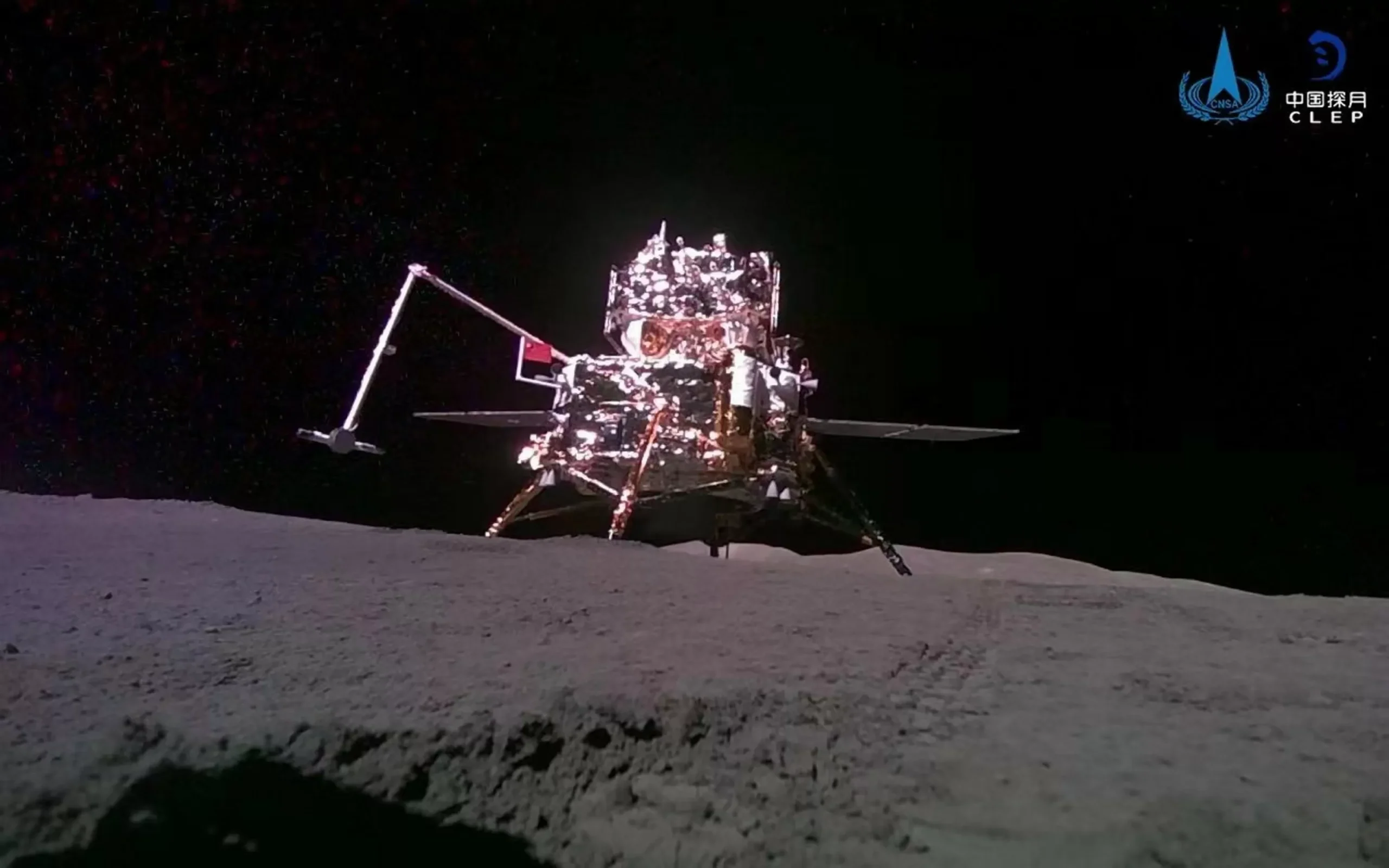A Chinese unmanned lunar probe has successfully completed its mission on the far side of the moon and is now headed back to Earth. This historic achievement marks China’s determination to become the first nation to collect rock samples from the moon’s far side.
The probe, named Chang’e-5, was launched on November 24th, 2020 and landed on the moon’s surface on December 1st. It spent a total of 23 days on the moon, collecting samples and conducting various experiments. This is a significant milestone for China’s space program, as it is the first time any country has landed a spacecraft on the far side of the moon.
The far side of the moon, also known as the “dark side,” is the hemisphere of the moon that is always facing away from Earth. It is a challenging location for space exploration due to the lack of direct communication with Earth and the harsh environment. However, China’s space agency, the China National Space Administration (CNSA), has successfully overcome these obstacles and achieved what was once thought to be impossible.
The success of the Chang’e-5 mission is a testament to China’s rapid advancements in space technology. In recent years, China has made significant investments in its space program, with the goal of becoming a major player in space exploration. This mission is just one of many planned by the CNSA, including a manned mission to the moon in the near future.
The rock samples collected by the Chang’e-5 probe will provide valuable insights into the moon’s geological history and evolution. Scientists believe that these samples could be over 1.2 billion years old and could potentially hold clues about the moon’s formation and the early stages of our solar system. This data will not only benefit China’s scientific community but also contribute to the global understanding of the moon and its role in our universe.
The success of the Chang’e-5 mission has also sparked excitement and admiration from the international community. Many countries, including the United States, have congratulated China on this remarkable achievement. This mission demonstrates China’s commitment to peaceful space exploration and cooperation with other nations.
China’s space program has come a long way since its first satellite launch in 1970. In the past few decades, China has launched numerous satellites, sent astronauts into space, and landed rovers on the moon and Mars. The country has also made significant contributions to the International Space Station (ISS) and has plans to build its own space station by 2022.
The success of the Chang’e-5 mission is a source of great pride for the Chinese people. It showcases China’s determination, perseverance, and technological advancements. It also serves as a reminder of the country’s ancient history and its fascination with the moon, which dates back to the Han Dynasty over 2,000 years ago.
As the Chang’e-5 probe makes its journey back to Earth, the world eagerly awaits the arrival of the rock samples. This mission is a significant step towards China’s ultimate goal of establishing a permanent presence on the moon. It also serves as a reminder that the possibilities of space exploration are endless and that China is at the forefront of this exciting journey.
In conclusion, the successful completion of the Chang’e-5 mission is a remarkable achievement for China and the global space community. It showcases China’s determination and capabilities in the field of space exploration and sets the stage for even more ambitious missions in the future. This is a proud moment for China, and it is a testament to the country’s commitment to pushing the boundaries of human knowledge and exploration.





![Complete BritRail Pass Guide [Types, How to Use It, Pros + Cons]](https://inside-news.uk/wp-content/uploads/2025/06/00221EB4-BCA2-4DBB-6CD4-83DBC37D71FA-120x86.webp)
















